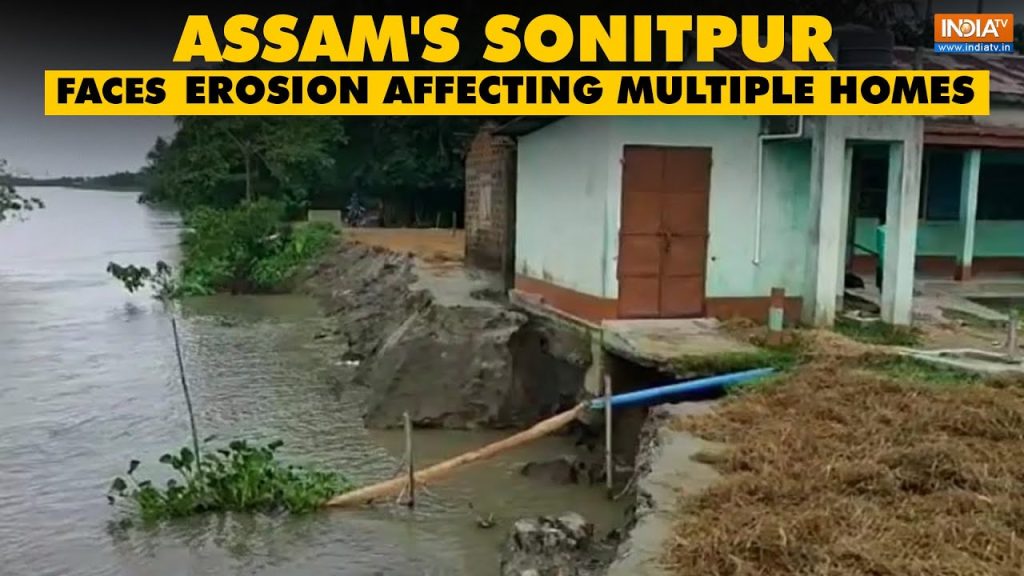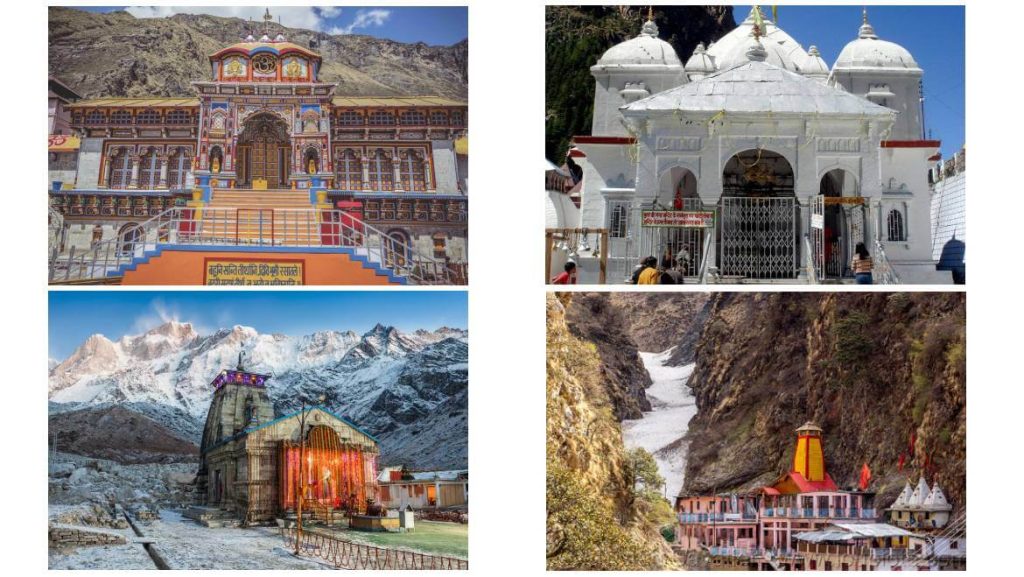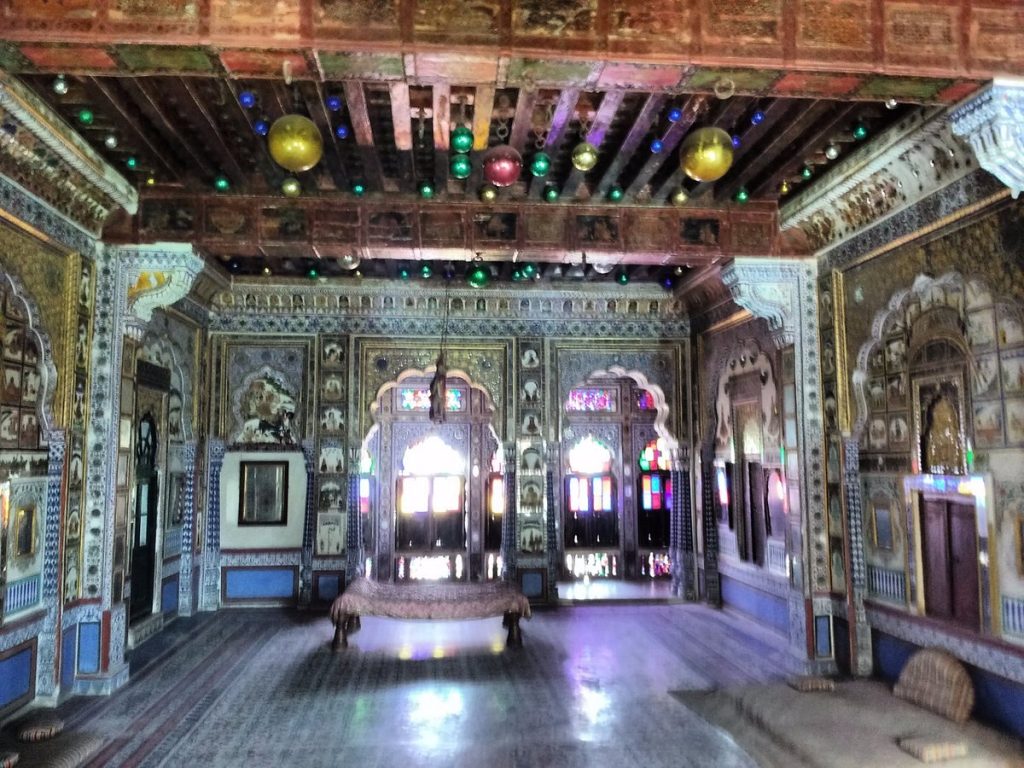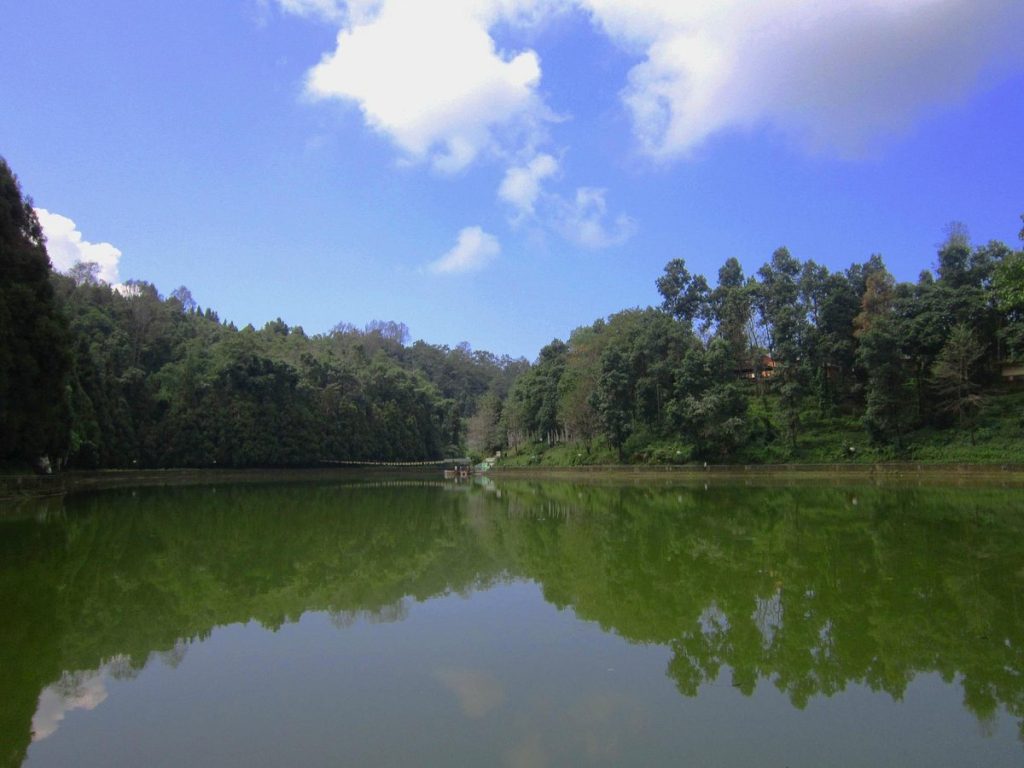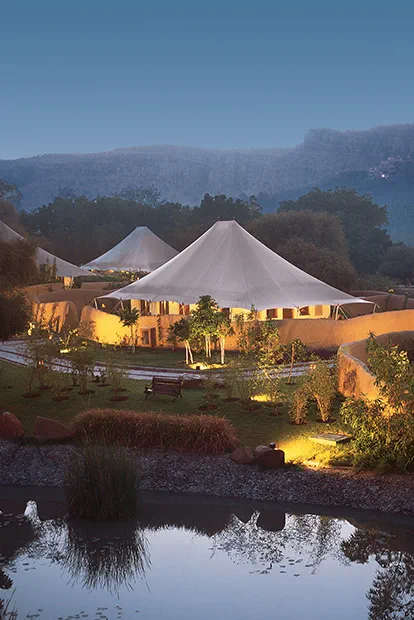Bandarpunch Glacier is a stunning natural wonder in the Himalayas. It attracts trekkers and nature enthusiasts from around the world.
Nestled in the Garhwal region of Uttarakhand, Bandarpunch Glacier offers breathtaking views and a challenging trekking experience. This glacier, part of the Bandarpunch massif, is a must-visit for adventure seekers and photographers alike. The glacier’s pristine beauty, surrounded by towering peaks and lush valleys, makes it an unforgettable destination.
As you explore its icy expanse, you’ll witness diverse flora and fauna, adding to the glacier’s charm. Whether you’re an experienced trekker or a nature lover, Bandarpunch Glacier promises an adventure filled with awe and wonder. Discover the magic of this icy paradise and immerse yourself in the beauty of the Himalayas.
Getting There
When planning a trip to the Bandarpunch Glacier, one of the most crucial aspects to consider is how to get there. This is no simple journey, but the rewards are well worth the effort. Below, we detail the travel routes and the best time to visit to make your adventure as smooth and enjoyable as possible.
Travel Routes
Reaching the Bandarpunch Glacier involves a combination of transport modes, including road travel and trekking. Here’s a detailed guide:
- By Air: The nearest airport is Jolly Grant Airport in Dehradun, about 200 kilometers away. Several airlines operate daily flights from major cities like Delhi and Mumbai.
- By Train: Dehradun Railway Station is the closest railhead, well-connected with trains from various parts of India. From Dehradun, you can hire a taxi or take a bus to reach your next destination.
- By Road: Once in Dehradun, you can either hire a private taxi or take a local bus to Sankri, the base village for the trek. The drive from Dehradun to Sankri takes around 8-10 hours through scenic landscapes.
- Trekking: The real adventure begins from Sankri. The trek to Bandarpunch Glacier is approximately 10-12 days long, depending on your pace and weather conditions. It’s a challenging trek, so be prepared for a thrilling yet demanding experience.
Best Time To Visit
Timing your visit is key to ensuring you get the most out of your trip to Bandarpunch Glacier. Here’s what you need to know:
- Summer (May to June): This is the most popular time for trekking. The weather is pleasant, with temperatures ranging between 10°C to 15°C. The trails are accessible, and you can enjoy clear views of the glacier.
- Post-Monsoon (September to October): Another great time to visit. The landscape is lush and green after the monsoon rains. The temperatures are cooler, making it comfortable for trekking. However, be aware that early snowfalls can sometimes block trails.
- Winter (November to April): The glacier and surrounding areas are covered in snow, making trekking nearly impossible. This period is best avoided unless you are an experienced mountaineer equipped for extreme conditions.
Have you ever trekked to a glacier before? If not, Bandarpunch Glacier offers an unforgettable experience for adventure enthusiasts. Plan well, choose the right season, and gear up for an exciting journey!
Preparation Tips
Preparing for a trek to Bandarpunch Glacier requires careful planning. This majestic destination, nestled in the Garhwal Himalayas, offers breathtaking views and a challenging adventure. To ensure a safe and enjoyable trek, focus on gear essentials and physical fitness.
Gear Essentials
Proper gear is crucial for a successful trek. Start with quality hiking boots. These should be sturdy and comfortable. Carry a durable backpack. It should have enough space for all your necessities. Pack layers of clothing. The weather can be unpredictable. Include a waterproof jacket. It will protect you from sudden rain.
Don’t forget essential accessories. Bring a headlamp for nighttime visibility. A first aid kit is vital for emergencies. Carry a map and compass. They help in navigation. Trekking poles can provide extra support. They reduce strain on your knees. Lastly, pack enough food and water. Hydration and nutrition are key for energy.
Physical Fitness
Good physical fitness enhances your trekking experience. Start a fitness routine weeks before your trek. Focus on cardio exercises. Running and swimming improve endurance. Strength training is equally important. It builds muscle for carrying a backpack. Include exercises like squats and lunges.
Practice hiking with a loaded backpack. This simulates the actual trek. Gradually increase the weight. It helps your body adapt. Flexibility exercises are also beneficial. Stretching reduces the risk of injuries. Maintain a balanced diet. Eat protein-rich foods and stay hydrated. Adequate sleep is crucial for recovery.
Trekking Routes
Explore the Bandarpunch Glacier trekking route for a thrilling adventure. This trail offers stunning views and diverse landscapes. Ideal for nature lovers and outdoor enthusiasts.
### Trekking Routes Exploring the Bandarpunch Glacier offers some of the most breathtaking trekking experiences in the Indian Himalayas. Whether you’re an experienced trekker or a curious novice, there’s a route for you. Let’s delve into the popular trails and some offbeat paths that you might not have considered.Popular Trails
Yamunotri to Bandarpunch Base Camp: This route is a favorite among trekkers. Starting from the sacred town of Yamunotri, you’ll journey through dense forests and picturesque meadows. The trail is well-marked and frequented by many, making it a safe choice for beginners. Dodi Tal to Bandarpunch Glacier: If you seek a mix of adventure and scenic beauty, this trail is for you. The route takes you through Dodi Tal, a serene lake, and then ascends to the glacier. The gradual climb allows you to acclimatize while soaking in the panoramic views. Sankri to Har Ki Dun and Bandarpunch: Another popular route, this trek takes you through the enchanting Har Ki Dun valley. The lush green landscapes and the sight of Bandarpunch in the distance create a memorable experience. This trail is moderate in difficulty, making it accessible to most fitness levels.Offbeat Paths
Hanuman Chatti to Bandarpunch Glacier: If you prefer solitude and untouched beauty, this offbeat path is ideal. Starting from Hanuman Chatti, the trail is less crowded, offering a peaceful trekking experience. The path is more challenging, recommended for seasoned trekkers who crave adventure. Osla to Bandarpunch Glacier: This path takes you through the ancient village of Osla, rich in culture and history. The trail offers a unique blend of cultural immersion and natural beauty. It’s less frequented, providing a tranquil trekking experience. Gaumukh to Bandarpunch Glacier: For those seeking a spiritual journey, this trail starts from Gaumukh, the source of the Ganges. The path is steep and demanding, perfect for thrill-seekers. The sense of accomplishment upon reaching the glacier is unparalleled. ### Practical Tips for Your Trek – Plan Your Route: Choose a trail that matches your fitness level and experience. Research thoroughly and prepare accordingly. – Acclimatize: Spend a day or two acclimatizing at higher altitudes to avoid altitude sickness. – Pack Wisely: Carry essential gear, including warm clothing, sturdy boots, and enough food and water. – Stay Informed: Keep track of the weather conditions and have a backup plan. Are you ready to embark on an unforgettable journey to Bandarpunch Glacier? Which trail excites you the most? Share your thoughts and plans in the comments below.
Credit: en.wikipedia.org
Flora And Fauna
Bandarpunch Glacier is a treasure trove of diverse flora and fauna. The glacier’s ecosystem supports a variety of unique wildlife and native plants, making it a fascinating destination for nature lovers. Let’s explore the unique wildlife and native plants that thrive in this stunning region.
Unique Wildlife
Bandarpunch Glacier is home to many unique animals. The snow leopard is one of the most famous residents. This elusive predator blends perfectly with the snowy terrain. You might also spot the Himalayan tahr, a wild goat with a thick coat. The musk deer, known for its musky scent, roams these lands too. Birds such as the Himalayan monal, with its vibrant plumage, add color to the landscape. Each creature plays a crucial role in the glacier’s ecosystem.
Native Plants
The glacier’s plant life is equally remarkable. Alpine meadows bloom with colorful flowers during the warmer months. You can find the blue poppy, which is the state flower of Uttarakhand. Rhododendrons, with their bright red blossoms, dot the slopes. These plants are not just beautiful; they are adapted to survive harsh conditions. They provide food and shelter for the region’s wildlife. The flora of Bandarpunch Glacier is a vital part of its natural beauty and biodiversity.
Local Culture
Nestled in the Garhwal Himalayas, Bandarpunch Glacier captivates visitors with its pristine beauty. Local culture thrives around this natural wonder, blending traditional practices with the serene environment.
Local Culture When visiting the Bandarpunch Glacier, you are not only treated to breathtaking natural beauty but also immersed in a rich and vibrant local culture. The region is steeped in traditions and unique cuisine that offer a glimpse into the lives of the people who call this majestic place home. Let’s delve into the heart of this culture with insights into their Traditions and Cuisine. ###Traditions
The area surrounding Bandarpunch Glacier is inhabited by various indigenous communities, each with their own distinct traditions. One of the most fascinating aspects is their deep connection with nature. Locals celebrate seasonal festivals that reflect their agricultural cycles. During the harvesting season, you’ll witness joyful community gatherings where folk dances and music play a central role. These dances, often performed in colorful traditional attire, tell stories of their ancestors and their relationship with the land. Another notable tradition is the practice of offering prayers at the sacred temples situated in the higher altitudes. This is not just an act of faith but a way to seek blessings for safety and prosperity. Have you ever participated in a community festival that felt like a window into the soul of a place? That’s exactly what you’ll experience here. ###Cuisine
The cuisine in the Bandarpunch Glacier region is a delightful blend of flavors and simplicity. It is designed to provide sustenance and warmth, essential for the cold mountainous climate. Local dishes often feature ingredients that are readily available in the region, such as barley, potatoes, and dairy products. One must-try dish is Thukpa, a hearty noodle soup loaded with vegetables and sometimes meat, offering a perfect way to warm up after a day of trekking. Churpi, a traditional hard cheese, is a popular snack that locals enjoy while on long hikes. It’s not just food; it’s an experience of local craftsmanship and patience, as it takes months to prepare. Imagine savoring Aloo Ke Gutke, a spicy potato dish, while sitting around a bonfire with the locals, sharing stories. Wouldn’t you agree that food tastes better when it’s shared with new friends? The cuisine here is not just about eating; it’s about connecting with the people and the environment. In exploring these traditions and cuisine, you gain a deeper understanding of the resilience and hospitality that define the local culture of the Bandarpunch Glacier region.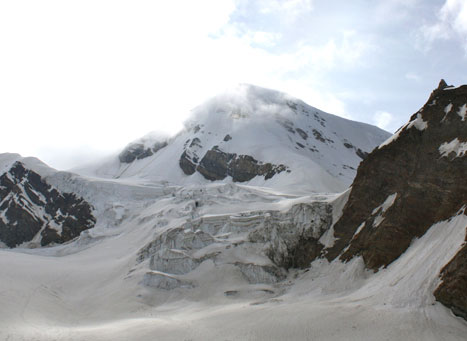
Credit: www.tourmyindia.com
Challenges And Safety
Exploring Bandarpunch Glacier is a thrilling adventure. Yet, it comes with challenges. Safety must be a top priority. This section discusses weather conditions and safety precautions.
Weather Conditions
Bandarpunch Glacier is known for its harsh weather. The temperature can drop suddenly. Snowstorms can occur without warning. This makes the region unpredictable. Climbers must be ready for rapid weather changes. Cold winds are common. They can cause frostbite. The thin air at high altitudes can affect breathing.
Safety Precautions
Proper gear is essential. Wear layers of clothing. Use insulated boots and gloves. Carry enough food and water. Stay hydrated. Use a reliable map and compass. Avoid traveling alone. Inform someone about your route. Carry a first-aid kit. Learn basic first aid skills. Always check weather forecasts before setting out.
Post-trek Relaxation
After a challenging trek to Bandarpunch Glacier, relaxation is essential. Your body and mind need to recuperate. Finding the right spots to rest and explore makes a big difference.
Rest Spots
Many trekkers head to the local tea houses. They offer warm drinks and a cozy atmosphere. Perfect for tired legs and weary minds. These spots often have comfortable seating and stunning views. It’s a serene place to reflect on your trek.
Guesthouses in the nearby villages also provide a peaceful retreat. They have comfortable beds and hearty meals. It’s the ideal place to rejuvenate and prepare for your next adventure.
Local Attractions
Explore the scenic beauty surrounding Bandarpunch Glacier. The area is rich with natural wonders. Waterfalls cascade down the mountainsides, creating picturesque spots for photos. These locations are great for short, leisurely walks.
Visit the local markets for a taste of regional culture. Browse handmade crafts and sample delicious local cuisine. It’s a wonderful way to experience the local way of life and take home a souvenir.
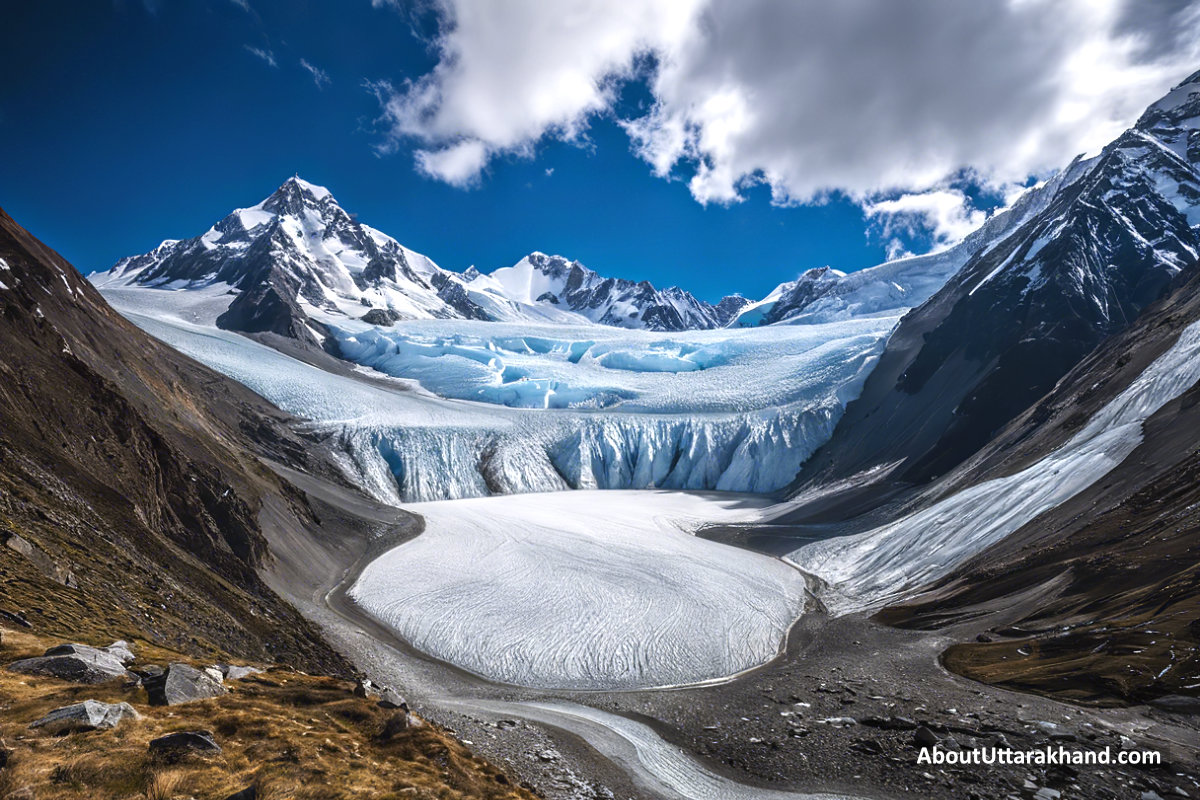
Credit: aboututtarakhand.com
Frequently Asked Questions
Where Is Bandarpunch Located?
Bandarpunch is located in the Garhwal region of Uttarakhand, India. This mountain peak is part of the Himalayas.
What Is The Story Of Bandarpunch?
Bandarpunch is a mountain massif in Uttarakhand, India. Its name means “Monkey’s Tail. ” It is linked to Hindu mythology. Hanuman, the monkey god, is said to have extinguished his burning tail here. The peak attracts trekkers and climbers for its challenging trails and scenic beauty.
What Is The Height Of Bandarpunch Peak?
Bandarpunch peak has a height of 6,316 meters (20,722 feet). It is located in the Garhwal Himalayas in India.
How Long Is Bandarpunch Glacier?
Bandarpunch Glacier is approximately 12 kilometers long. It is located in the Garhwal Himalayas in Uttarakhand, India.
Conclusion
Bandarpunch Glacier offers an incredible experience for nature lovers. Its majestic beauty and serene atmosphere captivate visitors. Hiking trails provide breathtaking views and adventure. Snow-capped peaks and pristine ice attract photographers and explorers. Visiting this glacier is a memorable journey.
You will cherish its tranquility and natural charm. Bandarpunch Glacier is truly a gem in the Himalayas. Plan your trip and witness the wonder firsthand. This destination promises unforgettable memories and spectacular sights. Enjoy the mesmerizing scenery and peaceful surroundings.
Bandarpunch Glacier awaits your exploration.
{ “@context”: “https://schema.org”, “@type”: “FAQPage”, “mainEntity”: [ { “@type”: “Question”, “name”: “Where is Bandarpunch located?”, “acceptedAnswer”: { “@type”: “Answer”, “text”: “Bandarpunch is located in the Garhwal region of Uttarakhand, India. This mountain peak is part of the Himalayas.” } } , { “@type”: “Question”, “name”: “What is the story of Bandarpunch?”, “acceptedAnswer”: { “@type”: “Answer”, “text”: “Bandarpunch is a mountain massif in Uttarakhand, India. Its name means \”Monkey’s Tail.\” It is linked to Hindu mythology. Hanuman, the monkey god, is said to have extinguished his burning tail here. The peak attracts trekkers and climbers for its challenging trails and scenic beauty.” } } , { “@type”: “Question”, “name”: “What is the height of Bandarpunch peak?”, “acceptedAnswer”: { “@type”: “Answer”, “text”: “Bandarpunch peak has a height of 6,316 meters (20,722 feet). It is located in the Garhwal Himalayas in India.” } } , { “@type”: “Question”, “name”: “How long is Bandarpunch Glacier?”, “acceptedAnswer”: { “@type”: “Answer”, “text”: “Bandarpunch Glacier is approximately 12 kilometers long. It is located in the Garhwal Himalayas in Uttarakhand, India.” } } ] }
